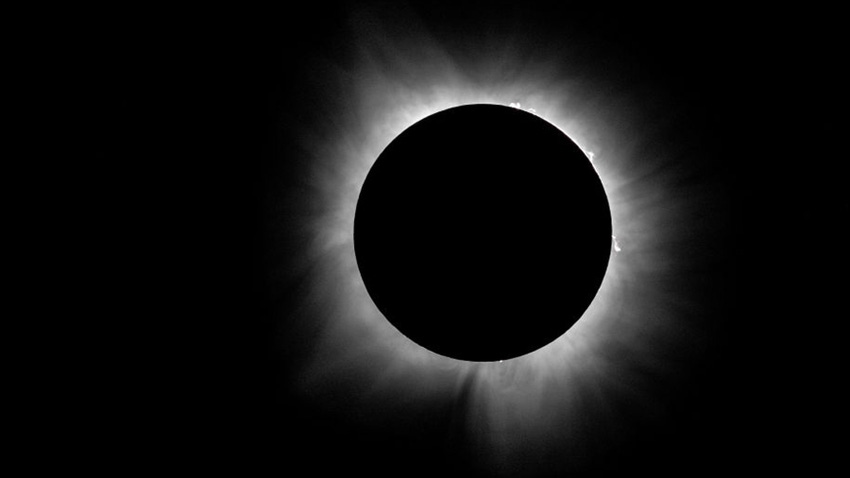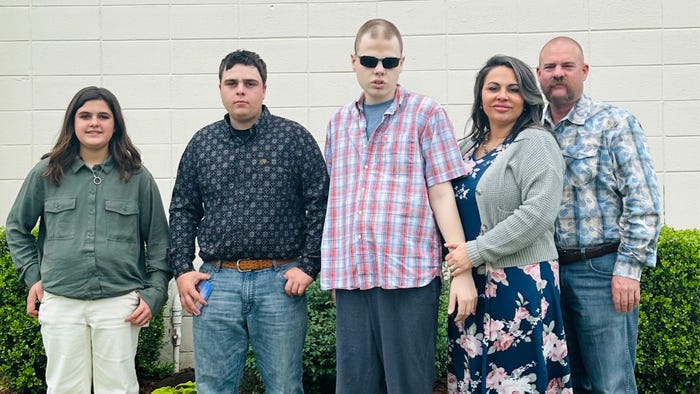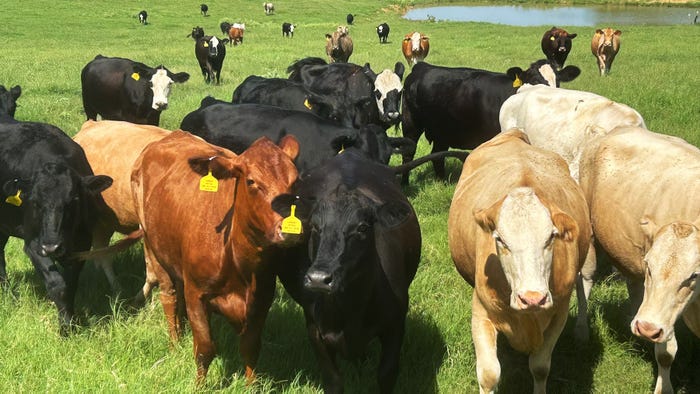
For the last year, Clint Langley, a cattle buyer from southeast Oklahoma, has been unmoved by the total eclipse hype on social media. A Twitter, now X, follower, he thought all this “totality” talk was a bunch of bull.
In fact, prior to the historic April 8 event, when the eclipse was mentioned, Langley often responded, “I hope I sleep through it.” Today, he’ll tell you he’s glad he didn’t.
Langley ranches in Choctaw County near Hugo, a town with a population of about 5,000 and a county identified to be in the path of totality. Thousands of spectators were expected to converge on his region for the historic eclipse. But as Langley repeatedly said, “I’m not a big eclipse guy.

Clint Langley family, from left, Cori, Cason, Colton, Bekah and Clint (Photo by Clint Langley)
“They were saying we were going to have about 100,000 people here. I ‘B.S.’d’ the whole deal. Who in the world would do this? It’s a freaking eclipse,” the cattleman said.
Langley, who described himself as a workwear, unshaven, tobacco-chewing buyer who tells it like it is, owns Langley Cattle Buying. He and his buyers attend about 30 cattle auctions per week when the weather is good, and cattle inventory is up. Like every Monday, Langley was headed to MLX (McDaniel Livestock Exchange) in McCurtain County, less than 30 miles east of Hugo.
“They shut down the cattle auction because of this eclipse,” he said. “The owner called me, and I was like, ‘Are you for real?’” The owner proceeded to explain that due to the expected spectator traffic, he was concerned he wouldn’t be able to get the cattle trucks out.
“Up to this point, I had zero interest in any of it whatsoever,” Langley reiterated.
But with no auction to attend, the cattle buyer returned home for lunch where his wife Bekah and their three children, Colton (22), Cason (17) and Cori (12) or ‘Baby Girl,’ as he calls her, were readying for the event.

Cattle grazing on Clint Langley's ranch. When the eclipse reached totality, Langley said his cattle near the house were bellowing loudly. (Clint Langley)
“Bekah bought like 112 pairs of eclipse glasses,” he joked. “I decided I better go do this deal.”
The Langley kids announced it was time. “As soon as I open the back door, I’m interested,” Langley admitted. It looks weird outside, so I walk to the other side of the house, put on the glasses, and look up.
“This, I’ve never seen before,” he said.
Langley described it as somewhat dark, referring to video footage he recorded just prior to totality. “It was a little darker than that after the video. But if you notice, the nightlights had come on. It was dark enough for your solar lights to come on automatically.”
As the moon began to move between the sun and the earth, his cattle, which graze near their home, began to bellow. “As it gets darker and darker, they get more vocal. At the peak of the eclipse, that’s when they peaked.
“The mommas were very, very vocal. They are bellowing and hollering. They know something is up. The calves are hollering back. As it becomes light again, they are still vocal but not as much.”
He regretted not capturing the sound of them at the height of their ruckus. Totality in Hugo started at 1:44 p.m. and lasted three minutes and 20 seconds, according to Eclipse2024.org.
As darkness faded, Langley said it wasn’t a normal light. “It’s a weird looking light. But by the time it’s normal, the mama cows start coming towards my house where they get fed every morning.
“I can’t tell you if they were coming there because they thought it was morning, or because they feel it’s a safe place. I don’t know for sure.”
It was just different. “It was not their routine,” he added. Langley also noticed the crickets chirping, “like you would hear at night.”
Livestock response
Interested in what others experienced, he inquired of one of his employees, Anatalio Aguilar. Aguilar reported that one of his goats, whom he and his wife kept checking because she was “heavily pregnant,” is now blind. “Her eyes turned blue, and she was running into the fences,” Aguilar told him. They speculate she stared at the eclipse, but no one knows for sure.
“He told me the goat was blinded, and it smelt like it had been branded, and she was hot to the touch,” Langley said.
A teenager who works at the local veterinary clinic told Langley that at totality, the dogs in the outdoor kennels went silent. Then, once daylight began to resume, the dogs started barking again.
Spectators
As for Choctaw County’s expected visitors, the county prepared for 16,000 to 17,000 spectators, but “fortunately, we only had about 1,500 to 2,000 people park and watch due to the cloud cover that day,” said Randy Springfield, Choctaw Ambulance Authority executive director.
“But we had a lot of traffic come through here to get on the Indian Nation Turnpike and our major highways.”
Springfield estimated about 10,000 people, “loaded down” in charter and school buses, passed through Choctaw County to McCurtain County, where the eclipse was expected to be �“more in the line of totality than we were.”
After increasing manpower and coverage from two ambulances to five, Springfield said they only received two calls on Monday, whereas they typically average 10 to 20 calls per day. He was relieved.
As for Langley, while he expected to be “a total stick in the mud when it came to an eclipse,” he reported that the longer it went, the more interested he became.
“I’m glad I was able to partake of it. I’ve made fun of people that have been coming through here to watch but, I actually enjoyed it.”
About the Author(s)
You May Also Like






